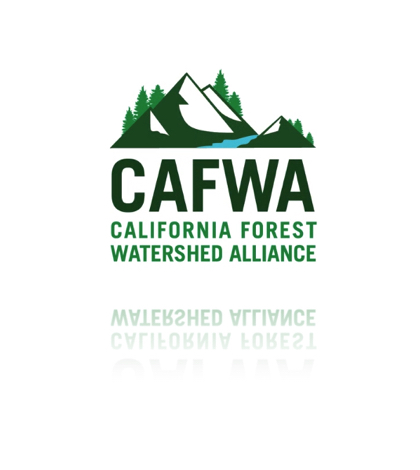The California Forest Watershed Alliance (CAFWA) has unveiled a new website and educational video detailed its proactive priorities to help protect the state’s forested watersheds and has thereby entered the state’s public policy area. CAFWA supports policies and practices that promote healthy forests that are more resilient to drought, wildfire, and climate change.
Founded in 2014, CAFWA represents water interests, local governments, the conservation community, agriculture and the forestry sector in order to promote the restoration and improvement of California’s forested watersheds. The urban-rural coalition is focused on increasing the pace and scale of ecologically-based forest management, increasing the funding for forest thinning and wildfire prevention efforts, increasing the geographic scope of forest management to address problems at a landscape scale, and making economic use of the byproducts of ecologically-based forest thinning through the use of biomass.
In support of the coalition multiple members of the group have spoken out as to need for CAFWA’s principles and policies.
“Our forests provide us with a multitude of benefits, including clean air, clean water, wildlife habitat, recreation and economic opportunities,” David Bischel, president of the California Forestry Association. “If we can proactively manage our forests, it will protect all of those environmental and economic values we rely on.”
“Without a major change in forest management, vast swaths of forests will continue to be lost, impacting the natural resources that residents throughout the state rely upon,” said Paul Wenger, president of the California Farm Bureau Federation. “It’s time that we come together to solve the crisis in our forests, and having a diverse group of interests working to restore our forests to healthier conditions for the long term is an idea everyone should support.”
Of particular concern to CAFWA members is the increase in fires throughout California. Five years of record drought have led to a year-round wildfire season in California, with wildfires increasing in both size and severity. Megafires degrade wildlife habitat, release tons of greenhouse gases into the atmosphere, threaten water supply and put lives and communities at serious risk.
The more than 100 million dead trees from insects and disease in the Sierra Nevada have further degraded forest health, wildlife habitat, and carbon storage – a function of the drought and unhealthy, overcrowded forest conditions. Recent storms, though desperately needed to quell the drought, have compounded the impacts in fire-scarred watersheds by sending debris and sediment into streams and drinking water supplies.
Expressing their concern for the waning health of California’s forests due to specifically the state’s fires also prompted CAFWA’s members to speak out.
“California’s wildfires are getting larger, hotter, and more destructive, posing a serious threat to wildlife habitat and natural values,” said David Edelson, Sierra Nevada project director for The Nature Conservancy. “That is why we are partnering with water utilities, rural counties, and the forestry sector to promote ecologically-based management of our forests and watersheds.”
“Static management practices, coupled with drier, hotter conditions, have created unhealthy, highly flammable forests, resulting in large, destructive, and difficult to control megafires,” said Justin Caporusso, vice president of external affairs for the Rural County Representatives of California. “Fortunately, there are better ways to manage our forests to reverse this trend and restore them to health. CAFWA’s collaborative effort seeks to bring attention to forest management practices that will protect our water, energy, environment, and economy.
As for the well-being of the state’s water, Tim Quinn, executive director of the Association of California Water Agencies said, “California’s water supply depends upon healthy forests and healthy watersheds. By proactively managing our forests, we can safeguard our water supply by reducing the risk of damaging megafires.”
CAFWA’s new website and educational video can be found at: www.caforestsandwatersheds.org.
 California Water News Daily Your Source For Water News in California
California Water News Daily Your Source For Water News in California


